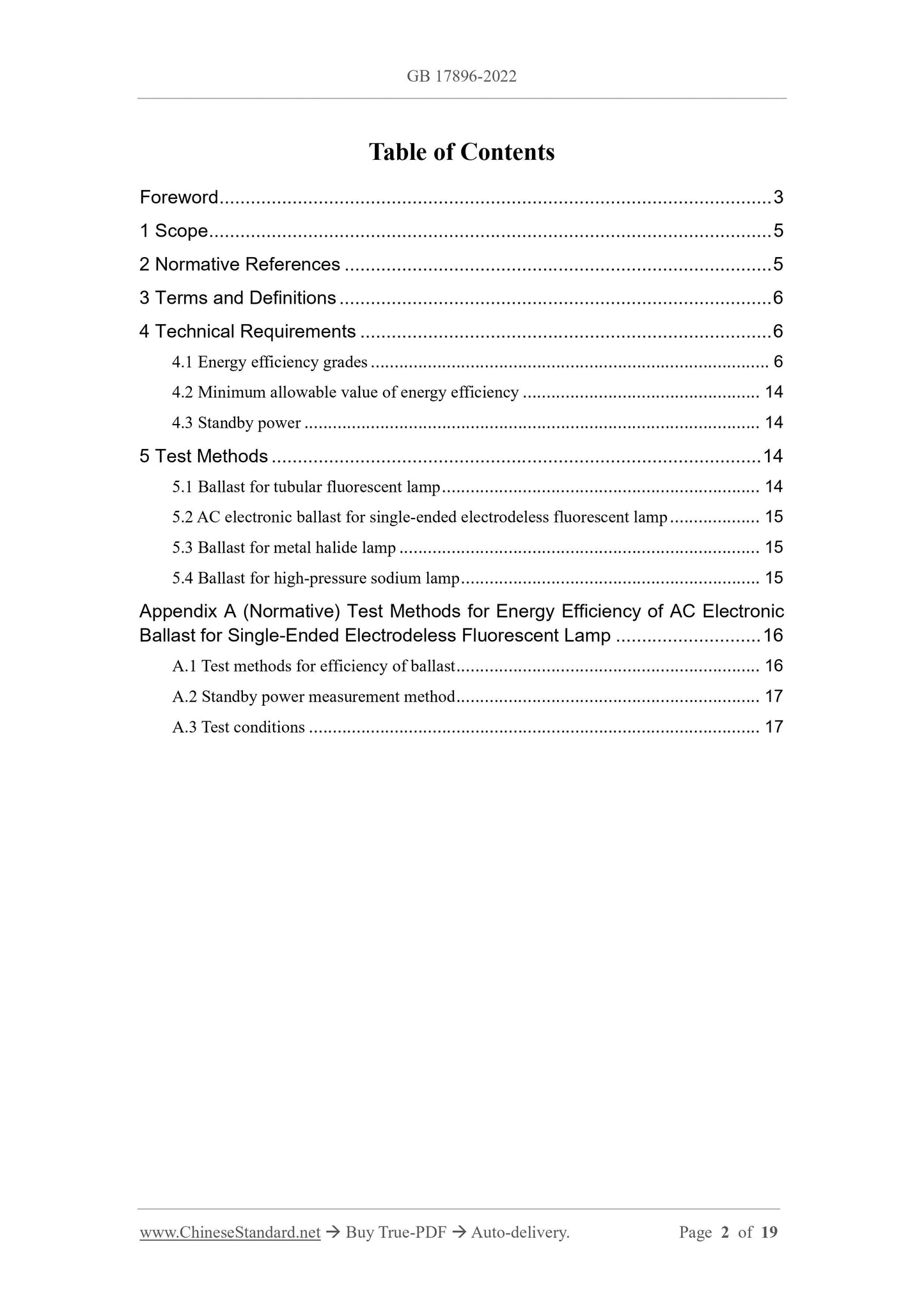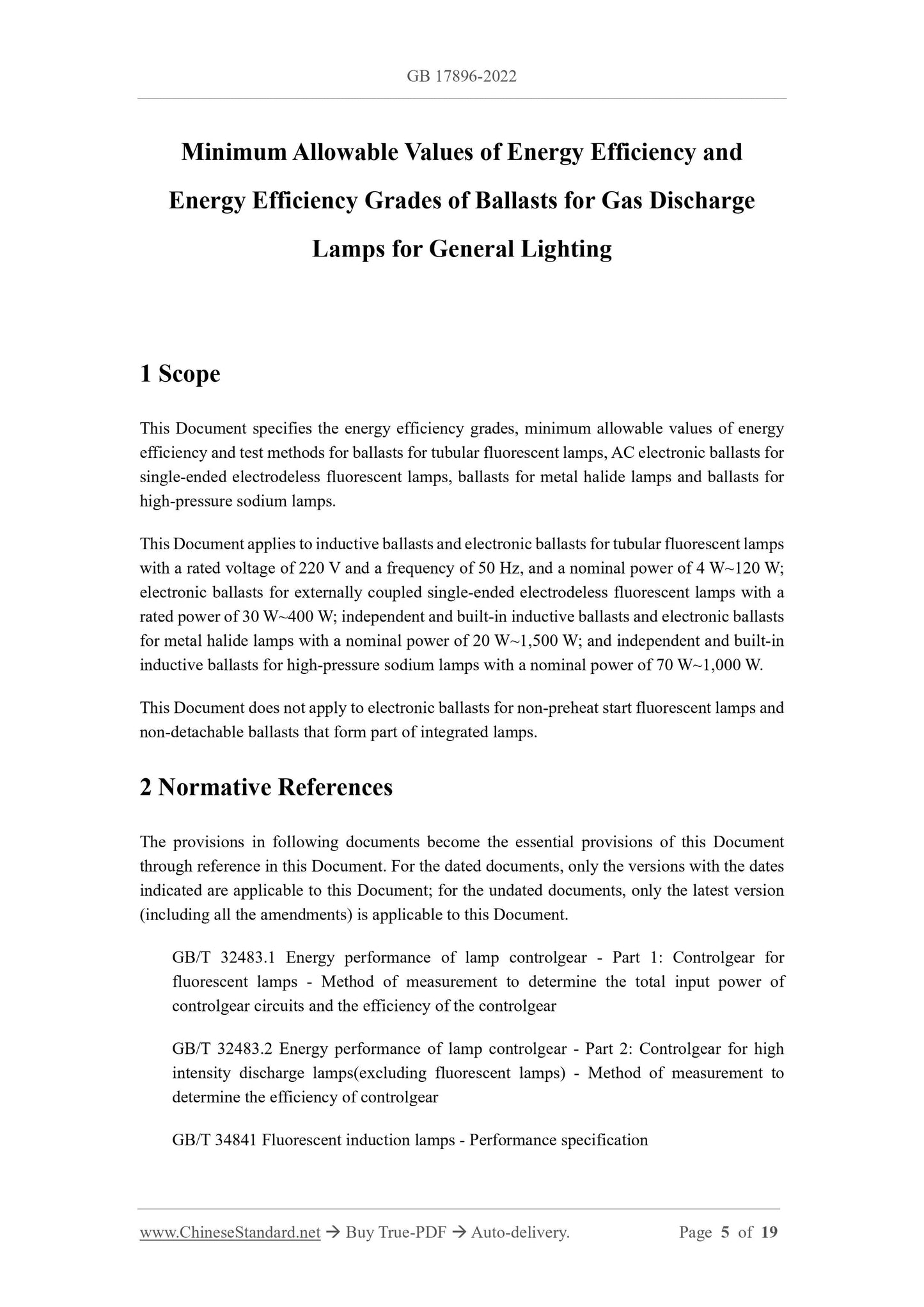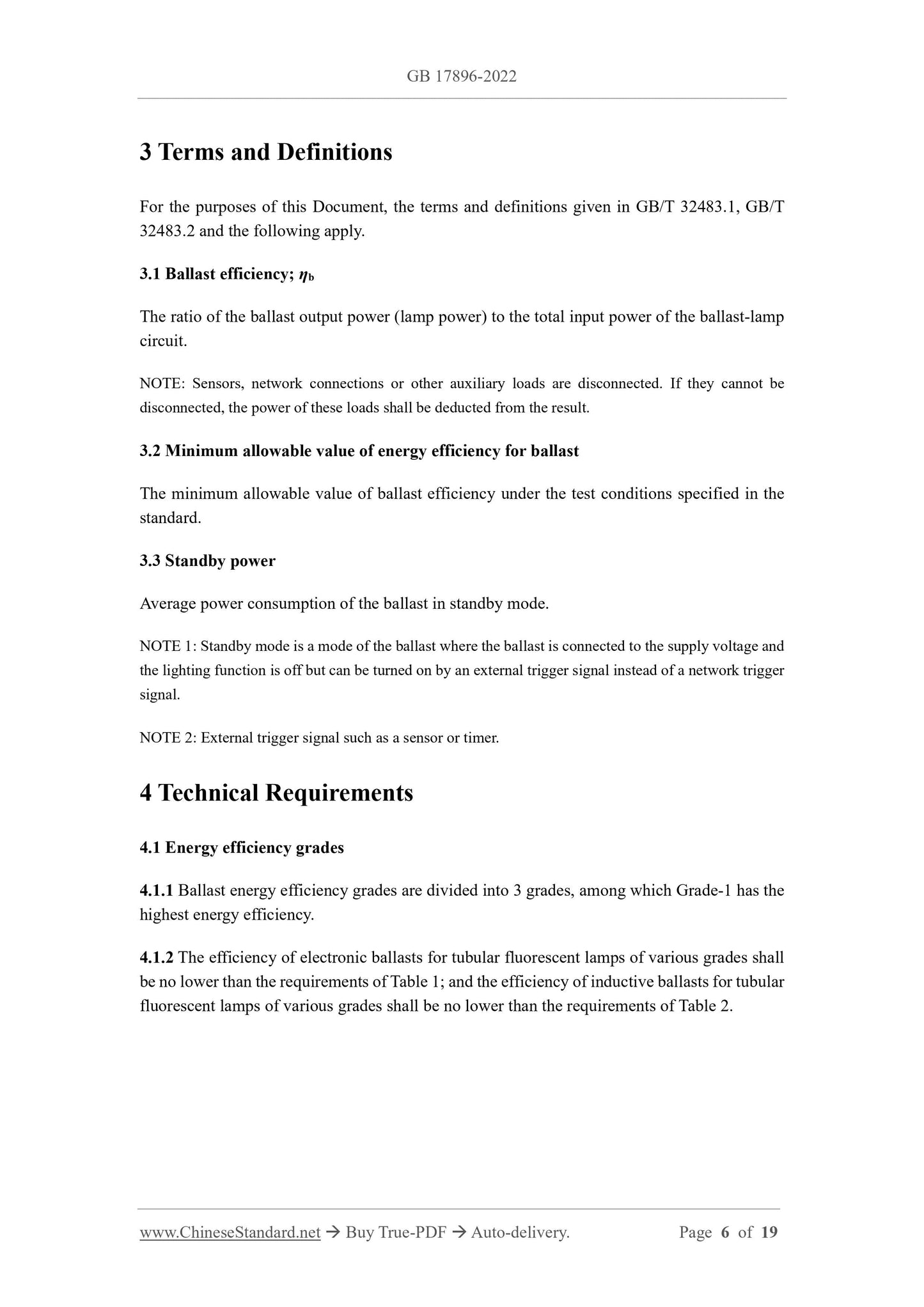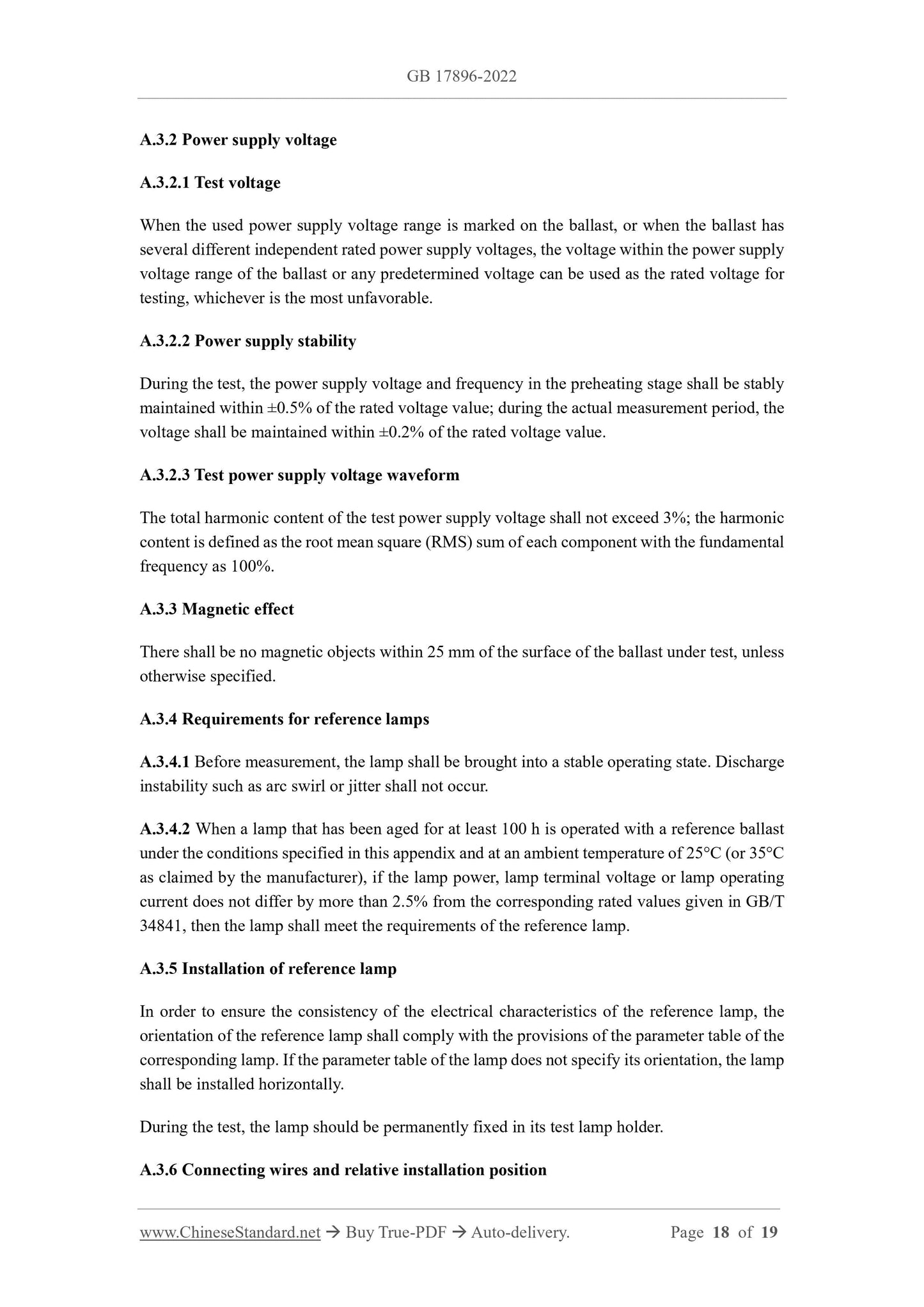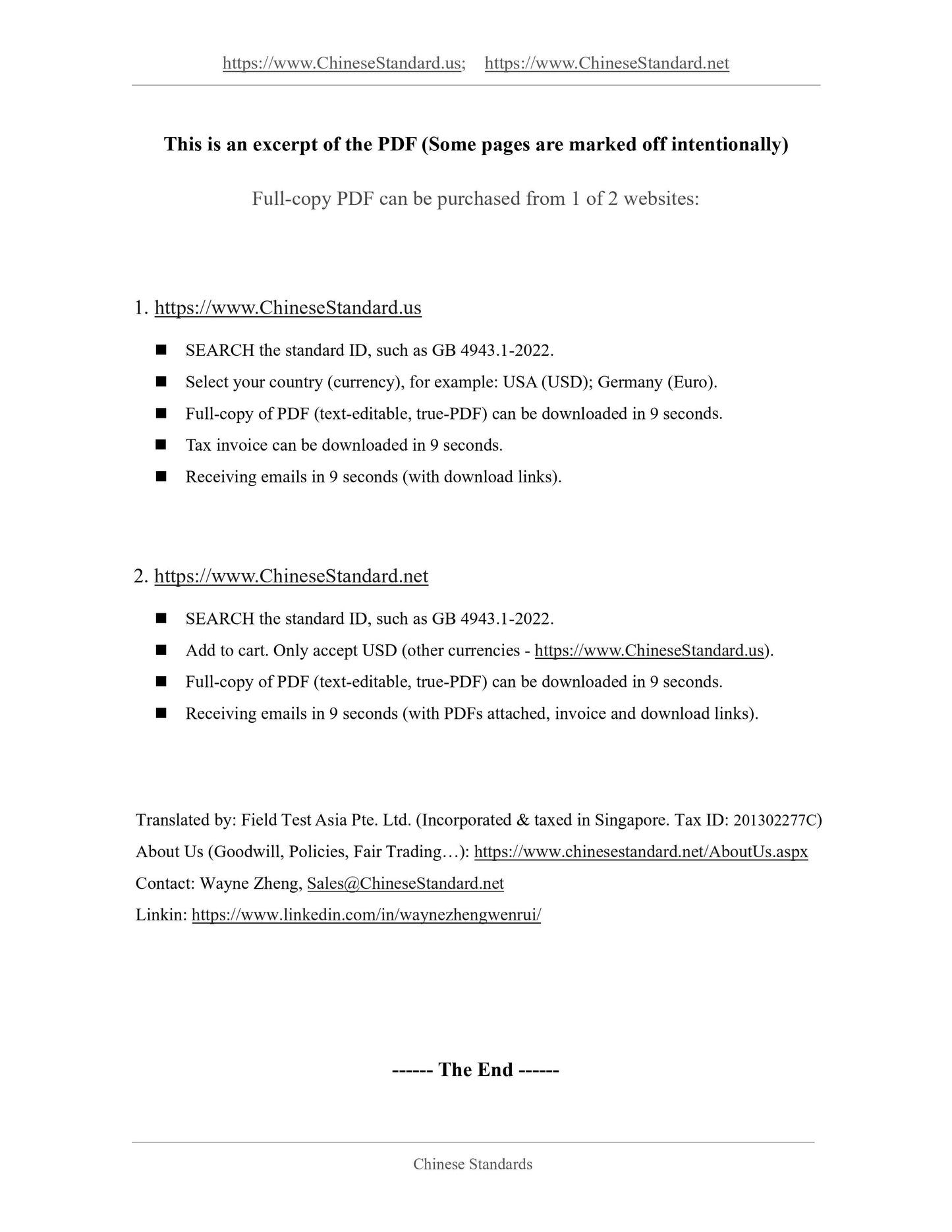1
/
of
6
www.ChineseStandard.us -- Field Test Asia Pte. Ltd.
GB 17896-2022 English PDF
GB 17896-2022 English PDF
Regular price
$275.00
Regular price
Sale price
$275.00
Unit price
/
per
Shipping calculated at checkout.
Couldn't load pickup availability
GB 17896-2022: Minimum allowable values of energy efficiency and energy efficiency grades of ballasts for gas discharge lamps for general lighting
Delivery: 9 seconds. Download (and Email) true-PDF + Invoice.Get Quotation: Click GB 17896-2022 (Self-service in 1-minute)
Newer / historical versions: GB 17896-2022
Preview True-PDF
Scope
This Document specifies the energy efficiency grades, minimum allowable values of energyefficiency and test methods for ballasts for tubular fluorescent lamps, AC electronic ballasts for
single-ended electrodeless fluorescent lamps, ballasts for metal halide lamps and ballasts for
high-pressure sodium lamps.
This Document applies to inductive ballasts and electronic ballasts for tubular fluorescent lamps
with a rated voltage of 220 V and a frequency of 50 Hz, and a nominal power of 4 W~120 W;
electronic ballasts for externally coupled single-ended electrodeless fluorescent lamps with a
rated power of 30 W~400 W; independent and built-in inductive ballasts and electronic ballasts
for metal halide lamps with a nominal power of 20 W~1,500 W; and independent and built-in
inductive ballasts for high-pressure sodium lamps with a nominal power of 70 W~1,000 W.
This Document does not apply to electronic ballasts for non-preheat start fluorescent lamps and
non-detachable ballasts that form part of integrated lamps.
Basic Data
| Standard ID | GB 17896-2022 (GB17896-2022) |
| Description (Translated English) | Minimum allowable values of energy efficiency and energy efficiency grades of ballasts for gas discharge lamps for general lighting |
| Sector / Industry | National Standard |
| Classification of Chinese Standard | F01 |
| Classification of International Standard | 27.010 |
| Word Count Estimation | 18,168 |
| Date of Issue | 2022-12-29 |
| Date of Implementation | 2024-01-01 |
| Older Standard (superseded by this standard) | GB 17896-2012, GB 29143-2012, GB 20053-2015, GB 19574-2004 |
| Issuing agency(ies) | State Administration for Market Regulation, China National Standardization Administration |
Share

